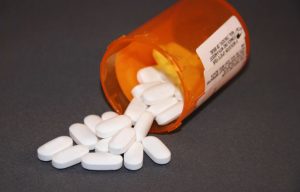Navigating College Life in the Midst of the Substance Use Dilemma
College life can be a mix of calm and storm, especially when it comes to navigating the complex issue of substance use. It is important for students entering into college life understand the pitfalls and dangers of drug use that may manifest at university life. With parties, new friends, peer pressure, school, work, and exam pressures, drug use sometimes seems like a way for students to relax and de-stress but instead, whether it is simple binge drinking to more dangerous pills to enhance study performance, drug use within university life can be a dangerous detour in life.

The article, “ADDICTION RECOVERY DURING HIGHER EDUCATION” from Intelligent.com looks at some of the common issues, as well as drugs that accompany college life. The article states,
It’s clear that college students are under a lot of pressure from school and their peers, leading them to engage in risky behaviors like substance misuse. There’s no denying the great benefit young adults stand to gain from attending schools of higher education, but it would be unwise to dismiss the use of alcohol and drugs as a normal part of the experience. Every year students struggle with academic performance and become injured or die as a result of substance use disorder.
To read the entire article, please click here
“ADDICTION RECOVERY DURING HIGHER EDUCATION”. Intelligent.com (2022).
The Impact of Substance Use on College Students
Patterns of Substance Use
Understanding the patterns of substance use among college students is crucial for addressing the broader implications of this issue. The prevalence of substance use varies across different types of substances, with alcohol, marijuana, and prescription drugs being the most commonly used. The frequency and intensity of use also differ, ranging from occasional experimentation to regular, heavy use that may signal dependency.
- Alcohol: Often seen as a central part of college social life, with a significant number of students engaging in binge drinking.
- Marijuana: Usage has been rising, possibly due to changing legal status and perceptions of risk.
- Prescription Drugs: Nonmedical use of prescription stimulants and opioids is a concern, particularly for their cognitive enhancement and pain relief properties.
The transition to college life can be a period of increased vulnerability to substance use due to new social pressures and stressors. This period often coincides with a peak in risk-taking behaviors, including experimentation with drugs and alcohol.
The data on substance use can be complex, with various factors influencing patterns, such as demographics, campus culture, and individual psychology. It is essential to analyze these patterns through a multifaceted lens to develop effective interventions.
Consequences of Substance Use
The repercussions of substance use among college students extend beyond the individual, affecting academic performance, personal relationships, and future career prospects. Substance use can lead to a range of health issues, from acute effects like overdoses and injuries to long-term consequences such as addiction and mental health disorders.
- Academic difficulties: missed classes, lower grades, and increased dropout rates
- Health problems: both physical (e.g., liver damage, heart problems) and psychological (e.g., anxiety, depression)
- Legal issues: arrests, fines, and a criminal record
- Social repercussions: strained relationships, isolation, and decreased social activities
The intersection of substance use and college life creates a complex web of challenges that students must navigate. The consequences are not isolated to health but permeate every aspect of life, often with long-lasting effects.
It is crucial to understand that these outcomes are not inevitable. With the right support and resources, students can overcome the challenges posed by substance use and lead successful, healthy lives.
Factors Influencing Substance Use
The myriad factors influencing substance use among college students are complex and multifaceted. Environmental, psychological, and social elements all play a critical role in shaping students’ attitudes and behaviors towards substance consumption.
- Environmental Factors: The college environment itself can be a significant contributor, with the availability of substances and the presence of events that encourage use.
- Psychological Factors: Individual characteristics such as stress levels, mental health status, and personal history with substance use can heavily influence a student’s propensity towards using substances.
- Social Factors: Peer pressure, the desire for social acceptance, and exposure to substance-using role models are powerful social factors that can sway a student’s decision-making.
The interplay between these factors can create a scenario where substance use becomes a normative behavior, despite the potential risks and consequences. Understanding these influences is crucial for developing effective prevention and intervention strategies.
Mental Health and Substance Use in College
Co-Occurrence of Mental Health Issues
The intersection of mental health issues and substance use in college students is a critical area of concern. The prevalence of co-occurring disorders—where individuals struggle with both mental health problems and substance abuse—has been observed to be significantly higher in the college population compared to the general public. This dual challenge can exacerbate the severity of each condition, leading to a complex cycle that is difficult to break.

The relationship between mental health and substance use is often bidirectional, with each influencing the onset and progression of the other. For instance, students may turn to substances as a form of self-medication for untreated or undiagnosed mental health issues, while substance use can also contribute to the development or worsening of mental health conditions.
The following list outlines common mental health disorders that frequently co-occur with substance use among college students:
- Depression
- Anxiety disorders
- Bipolar disorder
- Post-traumatic stress disorder (PTSD)
- Eating disorders
Addressing these co-occurring issues requires a comprehensive approach that considers the unique needs of each student. It is essential for college health services to integrate mental health and substance use treatment, offering a continuum of care that can adapt to the evolving needs of students.
Treatment Approaches
In the realm of college life, where mental health and substance use often intersect, treatment approaches must be multifaceted and tailored to the individual’s needs. Evidence-based therapies, such as Cognitive Behavioral Therapy (CBT) and Motivational Interviewing (MI), have shown efficacy in addressing substance use disorders among college students. These therapies aim to modify harmful behaviors and thought patterns while enhancing motivation for change.
The integration of treatment modalities can significantly improve outcomes for students grappling with substance use issues.
A comprehensive treatment plan may include a combination of the following:
- Individual counseling to provide personalized support and strategies for overcoming substance use.
- Group therapy sessions that offer peer support and a sense of community.
- Medication-assisted treatment (MAT) for cases involving opioid or alcohol dependence.
- Access to campus health services for ongoing medical and psychological care.
It is crucial for treatment programs to be accessible, non-judgmental, and supportive, creating an environment where students feel safe to seek help. Collaboration between campus health services, counseling centers, and external healthcare providers can ensure a continuum of care that addresses both the immediate and long-term needs of the student.
AIHCP offers a Substance Abuse Practitioner Certification for qualified professionals looking to help those dealing with addiction.
Preventive Strategies
In the realm of higher education, preventive strategies against substance use are paramount. Colleges and universities are increasingly adopting a multi-faceted approach to prevent substance misuse among students. These strategies are designed to address the issue before it escalates into addiction or causes harm.
- Education and Awareness: Institutions are implementing educational programs to inform students about the risks associated with substance use.
- Skill Development: Workshops on stress management, time management, and decision-making are offered to equip students with the skills needed to avoid substance use.
- Environmental Strategies: Changes to the campus environment, such as limiting the availability of substances and promoting substance-free events, help to reduce the temptation and accessibility of drugs and alcohol.
By fostering a campus culture that prioritizes health and well-being, colleges can create a supportive environment that discourages substance use and encourages positive lifestyle choices.
The success of these strategies often hinges on their integration into the fabric of campus life, ensuring that they are not isolated efforts but part of a comprehensive plan. Collaboration between students, faculty, and health services is essential to create a unified front against substance misuse.
Social Dynamics and Substance Use in College
Peer Influence
The social environment in college can significantly shape students’ attitudes and behaviors towards substance use. Peer influence is a critical factor in the decision-making process of college students regarding the consumption of alcohol, tobacco, and other drugs. The desire to fit in or be accepted by a group can lead to the adoption of risky behaviors that are normalized within certain social circles.
- The prevalence of substance use in social gatherings
- The role of fraternities and sororities
- The impact of peer pressure on individual choices
The dynamics of peer relationships often dictate the norms around substance use, which can either mitigate or exacerbate the issue.
Understanding the mechanisms of peer influence is essential for developing targeted interventions. Social networks within the college setting can act as conduits for both positive and negative behaviors. Therefore, addressing peer influence in substance use requires a nuanced approach that considers the complex interplay of social factors.
Social Norms
Social norms within the college environment play a pivotal role in shaping students’ attitudes and behaviors towards substance use. These unwritten rules and shared expectations can either mitigate or exacerbate the prevalence of substance use on campus. The normalization of substance use in social settings often leads to increased consumption among students, as they seek to align with perceived group standards.
- The perception of substance use as a common and accepted behavior among peers
- The influence of social gatherings and events where substance use is prevalent
- The role of Greek life and other campus organizations in setting social norms
The challenge lies in altering the social narrative to one that promotes healthy behaviors and critical thinking about the consequences of substance use.
Efforts to shift social norms require a multifaceted approach, including education, policy changes, and the promotion of substance-free social options. By addressing these norms directly, colleges can create an environment that supports healthier choices and reduces the pressure to engage in substance use.
Campus Policies and Programs

Colleges and universities have a unique role in shaping the environment in which students make decisions about substance use. Campus policies and programs are critical in establishing norms and providing support to students grappling with substance-related issues. These policies range from strict enforcement of legal drinking age to the provision of counseling and rehabilitation services.
- Prevention Programs: Aimed at educating students about the risks associated with substance use.
- Counseling Services: Offer support for students dealing with substance use and mental health issues.
- Recovery Communities: Provide a supportive environment for students committed to maintaining sobriety.
- Policy Enforcement: Involves disciplinary actions for substance use violations to deter future incidents.
The effectiveness of these programs and policies is often reflected in the campus culture, which can either condone or condemn substance use. A proactive approach in policy implementation and program development is essential to foster a healthy educational environment.
It is imperative for institutions to continuously evaluate and adapt their strategies to meet the evolving needs of their student population. Collaboration with student organizations and health services can enhance the reach and impact of these initiatives, creating a more comprehensive approach to substance use prevention and support.
Academic Performance and Substance Use
Effects on Academic Achievement
The nexus between substance use and academic performance in college students is a critical area of concern. Substance use has been consistently linked to poorer academic outcomes, including lower grades, higher rates of absenteeism, and an increased likelihood of dropping out. The cognitive impairments associated with substance abuse, such as diminished concentration and memory, directly undermine the ability to learn and perform academically.
The relationship between substance use and academic achievement is not merely correlational but indicative of a complex interplay of factors that affect a student’s educational trajectory.
To illustrate the impact more clearly, consider the following table which outlines the correlation between substance use frequency and academic indicators:
| Substance Use Frequency | GPA Range | Absenteeism Rate |
|---|---|---|
| High | 2.0 – 2.5 | 20% – 30% |
| Moderate | 2.5 – 3.0 | 10% – 20% |
| Low | 3.0 – 4.0 | 5% – 10% |
Furthermore, academic support systems play a pivotal role in mitigating the adverse effects of substance use. These systems include tutoring programs, academic advising, and mental health services. They are essential for providing the necessary assistance to students who struggle with substance use issues, ensuring that their academic journey is not irreparably derailed.
Support Systems
In the academic context, support systems play a pivotal role in mitigating the negative impact of substance use on students’ educational outcomes. Effective support systems are characterized by their accessibility, responsiveness, and comprehensiveness. They often encompass a range of services, including counseling, peer support groups, and academic accommodations.
- Counseling Services: Provide individual or group therapy sessions to address substance-related issues.
- Peer Support Groups: Offer a platform for students to share experiences and coping strategies.
- Academic Accommodations: Assist students in managing their coursework during recovery.
These support mechanisms are designed to work in tandem, creating a safety net that encourages students to seek help without fear of judgment or academic penalty. It is crucial for institutions to actively promote these resources to ensure students are aware of and can easily access them.
The integration of support systems into the fabric of campus life is essential for fostering a nurturing environment that prioritizes student well-being and academic success. Certified Substance Abuse Practitioners from AIHCP can offer aid and support to campus life.
Interventions
Interventions in the academic setting play a crucial role in addressing substance use among college students. Early identification and support can significantly alter the trajectory of a student’s academic and personal life. Tailored intervention strategies are essential, as they must align with the unique needs of each individual.
- Educational workshops
- Counseling services
- Peer support groups
- Referral to professional treatment
These interventions aim to not only provide immediate support but also to equip students with the tools necessary for long-term recovery and academic success. It is imperative that institutions foster an environment where seeking help is normalized and encouraged.

The success of interventions is often measured by their ability to reduce the frequency of substance use and improve academic performance. Continuous evaluation and adaptation of these programs are necessary to ensure their effectiveness in the ever-changing landscape of college life.
Coping Mechanisms and Substance Use
Stress Management
College life presents a unique set of stressors that can lead students to seek relief through substance use. Effective stress management is crucial in mitigating the risk of substance dependency. Students who develop robust coping mechanisms are better equipped to handle the pressures of academic and social demands without resorting to harmful substances.
- Identification of stress triggers
- Time management skills
- Relaxation techniques such as deep breathing, meditation, and yoga
- Regular physical activity
- Adequate sleep
The ability to manage stress through healthy practices is not only beneficial for students’ mental health but also serves as a protective factor against substance abuse. Developing a personal toolkit of stress management strategies can empower students to navigate college challenges more successfully.
It is important for educational institutions to provide resources and support for stress management. Workshops, counseling services, and wellness programs can play a significant role in educating students about the importance of self-care and the dangers of using substances as a coping mechanism.
Coping Strategies
In the academic sphere, the development of effective coping strategies is paramount for college students grappling with substance use. Adaptive coping mechanisms can mitigate the risk of substance abuse and aid in the management of stressors inherent to college life. These strategies often involve a combination of personal, social, and institutional support systems.
- Personal coping strategies may include mindfulness practices, physical activity, and engaging in hobbies. These activities serve to distract from cravings and reduce stress.
- Social coping strategies involve seeking support from friends, family, or support groups who provide encouragement and accountability.
- Institutional coping strategies refer to utilizing campus resources such as counseling centers, health services, and substance-free events.
The cultivation of a robust set of coping strategies is essential for students to navigate the pressures of college without resorting to substance use. It is a proactive approach that emphasizes resilience and self-care.
While individual strategies vary, the common goal is to foster an environment where students can thrive academically and personally, without reliance on substances. Institutions play a critical role in providing the necessary resources and creating a supportive campus culture.
Healthy Alternatives
In the quest to mitigate substance use among college students, the promotion of healthy alternatives plays a pivotal role. Engaging in regular physical activity, pursuing hobbies, and participating in community service can significantly redirect the focus from substance use to more constructive endeavors. These activities not only provide a sense of accomplishment but also enhance overall well-being.
- Physical activities such as sports, yoga, or gym sessions
- Creative pursuits like music, art, or writing
- Volunteering for social causes or joining student organizations
Embracing these alternatives fosters a supportive environment that encourages personal growth and resilience. It is essential for students to have access to resources that facilitate the adoption of these positive practices.
Furthermore, the establishment of campus-wide programs that highlight the benefits of a substance-free lifestyle can reinforce the value of these healthy alternatives. By integrating such programs into the college culture, institutions can create a more inclusive and supportive atmosphere for all students.
Community Engagement and Substance Use Prevention
Community Initiatives
Community initiatives play a pivotal role in the prevention of substance use among college students. These programs often leverage local resources and are tailored to meet the specific needs of the community. Boldly, they bridge the gap between college campuses and the wider community, fostering a supportive environment that discourages substance use.
- Campus-Community Partnerships: These collaborations focus on creating a seamless support network for students.
- Awareness Events: Local events and workshops raise awareness about the dangers of substance use.
- Volunteer Programs: Engaging students in community service can provide a sense of purpose and deter substance use.
Community initiatives not only address the immediate risks associated with substance use but also work towards building a resilient student body equipped with the knowledge and skills to make informed choices.
The success of these initiatives often hinges on the active participation of various stakeholders, including students, faculty, local businesses, and law enforcement agencies. By working together, they create a comprehensive approach to substance use prevention that resonates throughout the community.
Educational Campaigns
Educational campaigns play a pivotal role in substance use prevention on college campuses. These campaigns are designed to inform students about the risks associated with substance use, and to promote healthy, drug-free lifestyles. By leveraging various communication channels, such campaigns aim to reach a broad audience and create a more informed student body.
- Awareness-raising events
- Distribution of informational materials
- Workshops and seminars
- Social media outreach
Educational campaigns often rely on peer-to-peer communication to enhance their effectiveness. This approach capitalizes on the influence that students have over their peers, fostering a supportive environment for making healthy choices.
The success of these campaigns is frequently measured through surveys and feedback mechanisms, which help to tailor future initiatives to the needs and preferences of the student population. Continuous evaluation and adaptation are crucial to ensure that the message remains relevant and impactful.
Collaborative Efforts
Collaborative efforts in substance use prevention are pivotal in fostering a supportive environment for college students. Interdisciplinary partnerships between academic institutions, healthcare providers, and community organizations have shown to enhance the efficacy of prevention programs. These alliances leverage diverse expertise and resources to address the multifaceted nature of substance use.
- Academic institutions provide research-based insights and educational resources.
- Healthcare providers offer clinical support and mental health services.
- Community organizations contribute with outreach programs and local support networks.
The synergy of these collaborations creates a comprehensive approach to substance use prevention, aiming to reduce the incidence and mitigate the impact on the student body.
The success of these joint ventures can often be measured through various metrics, such as reduced substance use rates, increased awareness, and improved student well-being. It is essential for these collaborative efforts to be sustained over time to ensure long-term benefits and adapt to the evolving landscape of college life.
Conclusion
In conclusion, the complex interplay between college life and substance use presents a significant challenge for students navigating this delicate balance. As highlighted throughout this article, the prevalence of drug use among college students underscores the need for comprehensive support systems and educational initiatives to address this pressing issue. By fostering a culture of open communication, promoting healthy coping mechanisms, and providing access to resources for those in need, universities can play a pivotal role in mitigating the risks associated with substance use on campus. It is imperative for all stakeholders, including students, faculty, and administrators, to work collaboratively towards creating a safer and more supportive environment that prioritizes the well-being and success of every individual.

Please also review AIHCP’s Substance Abuse Practitioner Certification and see if it meets your academic and professional goals. The program is online and independent study and open to qualified professionals seeking a four year certification as a Substance Abuse Practitioner
Frequently Asked Questions
What are the common patterns of substance use among college students?
Common patterns of substance use among college students include experimentation, social use, regular use, and abuse.
What are the potential consequences of substance use for college students?
Potential consequences of substance use for college students may include academic decline, health issues, legal problems, and impaired decision-making.
What factors influence substance use among college students?
Factors influencing substance use among college students may include peer pressure, stress, mental health issues, and availability of substances.
How do mental health issues and substance use often co-occur in college students?
Mental health issues and substance use often co-occur in college students as individuals may use substances to cope with mental health symptoms.
What are some common treatment approaches for college students with co-occurring mental health and substance use issues?
Common treatment approaches may include integrated therapy, medication management, and support groups tailored to address both mental health and substance use concerns.
What preventive strategies can help college students reduce the risk of substance use?
Preventive strategies for college students may include education on the risks of substance use, promoting healthy coping mechanisms, and creating a supportive campus environment.
How does peer influence impact substance use among college students?
Peer influence can play a significant role in college students’ substance use behaviors, as individuals may be influenced by their peers’ attitudes and behaviors towards substances.
What role do campus policies and programs play in addressing substance use among college students?
Campus policies and programs can help create a safe and supportive environment by implementing substance-free initiatives, providing resources for students in need, and promoting healthy lifestyle choices.
Additional Resources
“Substance Use Among College Students”. Justine W. Welsh, M.D., Yujia Shentu, M.S., and Dana B. Sarvey, M.D. (*2019). National Library of Medicine. Access here
Yujia Shentu, M.S., and Dana B. Sarvey, M.D. (*2019). National Library of Medicine. Access here
“College Drug Abuse”. Addiction Center. (2024). Access here
“Comprehensive Guide to Drugs on Campus”. DrugRehab.com Access here
“For College Students Battling Addiction, a Safe Space for Recovery”. Johnson, S. (2022). U.S News. Access here
















